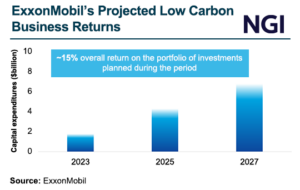Outlook for Heat Weakens Overnight as Natural Gas Called Slightly Lower
Natural gas futures were down slightly in early trading Tuesday as the overnight forecasts advertised a somewhat cooler outlook for later this month into early July. The July Nymex contract was down 0.9 cents to $1.655/MMBtu at around 8:45 a.m. ET.

Midday cooler changes in the Global Forecast System (GFS) likely aided the afternoon sell-off in Monday’s session, according to NatGasWeather. The GFS maintained the cooler trend overnight, while the European model also shifted somewhat cooler to bring itself into better agreement with its American counterpart, the forecaster said.
“The European model is still hotter compared to the GFS model…and remains very warm to hot” for the period starting this weekend and extending through July 4, but it is “not quite as hot” day/day, NatGasWeather said. “Natural gas prices are a couple cents lower in overnight trade, so it’s possible the markets noticed the European model giving back several” cooling degree days.
“Weather patterns remain not quite hot enough the rest of the week due to weather systems tracking across the Midwest and east-central U.S. The data still has stronger demand arriving this weekend and next week” but “not quite as hot as previous days,” according to the forecaster. “…It’s still a very warm to hot pattern, but is it hot enough to rally prices?”
Looking at the supply picture, Lower 48 production rose back above the 87 Bcf/d mark last week, the first time output has reached this level since mid-May, according to estimates from Genscape Inc. Output remained above 87 Bcf/d throughout the weekend.
“Production has generally been on the decline throughout 2020,” Genscape analyst Anthony Ferrara said. “We saw daily production dip below 90 Bcf/d for the first time this year on May 1, and then below 87 Bcf/d on May 17. However, production has slowly started to climb back up since dropping under 85 Bcf/d on May 20, crossing the 87 Bcf/d mark on June 14 and hovering around there ever since.
“The gains in production have been supported by more favorable economics with rising oil prices, as well as recovering production from Tropical Storm Cristobal.”
On the demand side, weakness in U.S. liquefied natural gas (LNG) exports is putting more pressure on summer heat to soak up some of the supply, according to Energy Aspects.
“As U.S. gas fails to find a home abroad, the backed-up feed gas will only swell domestic inventories,” Energy Aspects said.
As of late last week U.S. feed gas demand totaled more than 5.0 Bcf/d below highs observed in late March, according to the firm’s estimates.
This is a “major contributor in the shoulder season’s stubbornly high injection rate despite weaker production year/year,” Energy Aspects said. “As more gas that was bound for U.S. liquefaction is pushed back into storage, prices will have little room for upside outside of extended summer heat, especially as we have noted that an initial return of associated gas volumes is taking hold.”
August crude oil futures were up 53 cents to $41.26/bbl at around 8:45 a.m. ET, while July RBOB gasoline was up about 2.6 cents to $1.3177/gal.
© 2024 Natural Gas Intelligence. All rights reserved.
ISSN © 1532-1231 |


